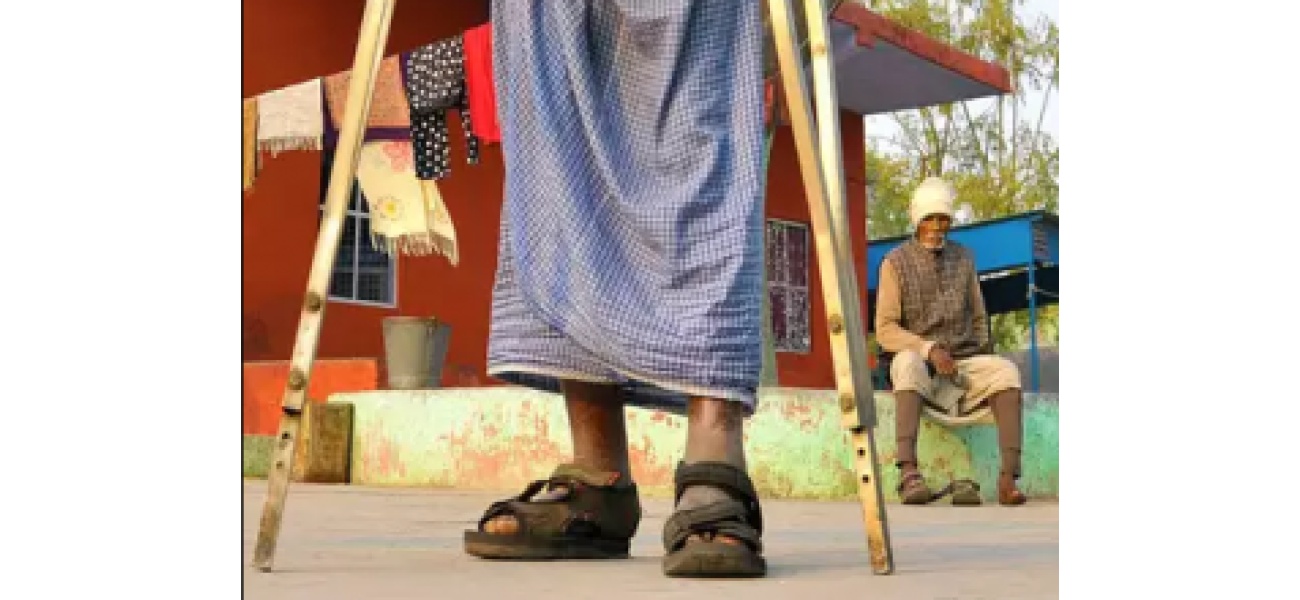Leprosy is on the rise in Odisha due to neglect and reduced funding.
Despite government's goal to eradicate leprosy by 2027, Odisha continues to see a rise in cases.
February 24th 2025.

Debadurlav Harichandan, a journalist for OP, reports that despite the ambitious goal set by the Ministry of Health and Family Welfare to achieve a "Leprosy-Mukt Bharat" (Leprosy-free India) by 2027, the state of Odisha is still struggling to control the disease. In fact, the number of leprosy cases in the state has increased from 6,148 in 2020-21 to 8,396 in 2023-24. This is a concerning trend, especially since the funding from the Union government has also decreased between 2022-23 and 2024-25, making the fight against leprosy even more challenging.
According to reports, the National Leprosy Eradication Programme has set a goal to eliminate leprosy from India by 2027. However, Odisha has been reporting a prevalence rate of more than 1 case per 10,000 people for the past five years. In western Odisha, the situation is even more dire, with some districts consistently reporting a prevalence rate of 3 to 5 per 10,000 people.
The number of leprosy cases in Odisha has been on a steady rise, with a slight dip in 2021-22 but a significant surge in 2022-23 and 2023-24. The recorded cases till December 2024 were 6,194, but experts predict that the final numbers for the whole year will surpass the previous years' records. This is a cause for concern, not only for public health but also for the economy of the state. Odisha has a high female labor force participation rate of 49.4%, above the national average of 42%. However, with women making up 41.6% of leprosy cases in 2023-24, the highest ever, there is a risk of disrupting economic activity in the state. Industries, services, and informal labor sectors rely on the participation of female workers, and this surge in leprosy cases may impact their productivity, according to experts.
Despite the progress in other states, Odisha continues to struggle in the fight against leprosy. While nearly 90% of districts across 28 states have achieved zero-case status, over two-thirds of Odisha districts are yet to achieve this. This highlights the need for more focused efforts and resources in the state.
Sajani Mohanty, a 67-year-old resident of Ramakrushna Leprosy Colony near Kharvel Nagar, shared her personal experience with the disease. She was abandoned by her parents at the age of five after they discovered she had leprosy. Later, she was taken in by a childless couple, but they also abandoned her when they discovered her condition. She then moved to a shelter home, where she met her husband, who was also a leprosy victim. Despite their struggles, they moved to the Capital City with hope for a new beginning. However, her husband passed away due to lack of access to proper treatment, leaving Sajani to beg on the streets to support her family. Her daughter, Sanghamitra Mohanty, had to drop out of college due to financial constraints, but she hopes to complete her education through a distance learning program.
A senior district public health officer, who wished to remain anonymous, shared his concerns about the state's apathy towards leprosy cases. He has raised concerns about the shortage of Rifampicin, a drug used to treat leprosy, at several meetings, but no action has been taken. As a result, leprosy patients are unable to access life-saving medication. The official also expressed concern that if the cases do not decrease soon, the Union Government may increase the prevalence rate benchmark from 1 case per 10,000 to 1 case per 20,000 to make the situation appear less severe.
It is alarming that, despite the increase in leprosy cases in the state, the funding from the Centre has decreased. This has weakened Odisha's fight against the disease, even though it is among the top five states in India with the highest number of leprosy cases. This is a matter of grave concern for the state, and urgent action needs to be taken to address the rising cases and ensure that proper treatment is accessible to those affected by leprosy.
According to reports, the National Leprosy Eradication Programme has set a goal to eliminate leprosy from India by 2027. However, Odisha has been reporting a prevalence rate of more than 1 case per 10,000 people for the past five years. In western Odisha, the situation is even more dire, with some districts consistently reporting a prevalence rate of 3 to 5 per 10,000 people.
The number of leprosy cases in Odisha has been on a steady rise, with a slight dip in 2021-22 but a significant surge in 2022-23 and 2023-24. The recorded cases till December 2024 were 6,194, but experts predict that the final numbers for the whole year will surpass the previous years' records. This is a cause for concern, not only for public health but also for the economy of the state. Odisha has a high female labor force participation rate of 49.4%, above the national average of 42%. However, with women making up 41.6% of leprosy cases in 2023-24, the highest ever, there is a risk of disrupting economic activity in the state. Industries, services, and informal labor sectors rely on the participation of female workers, and this surge in leprosy cases may impact their productivity, according to experts.
Despite the progress in other states, Odisha continues to struggle in the fight against leprosy. While nearly 90% of districts across 28 states have achieved zero-case status, over two-thirds of Odisha districts are yet to achieve this. This highlights the need for more focused efforts and resources in the state.
Sajani Mohanty, a 67-year-old resident of Ramakrushna Leprosy Colony near Kharvel Nagar, shared her personal experience with the disease. She was abandoned by her parents at the age of five after they discovered she had leprosy. Later, she was taken in by a childless couple, but they also abandoned her when they discovered her condition. She then moved to a shelter home, where she met her husband, who was also a leprosy victim. Despite their struggles, they moved to the Capital City with hope for a new beginning. However, her husband passed away due to lack of access to proper treatment, leaving Sajani to beg on the streets to support her family. Her daughter, Sanghamitra Mohanty, had to drop out of college due to financial constraints, but she hopes to complete her education through a distance learning program.
A senior district public health officer, who wished to remain anonymous, shared his concerns about the state's apathy towards leprosy cases. He has raised concerns about the shortage of Rifampicin, a drug used to treat leprosy, at several meetings, but no action has been taken. As a result, leprosy patients are unable to access life-saving medication. The official also expressed concern that if the cases do not decrease soon, the Union Government may increase the prevalence rate benchmark from 1 case per 10,000 to 1 case per 20,000 to make the situation appear less severe.
It is alarming that, despite the increase in leprosy cases in the state, the funding from the Centre has decreased. This has weakened Odisha's fight against the disease, even though it is among the top five states in India with the highest number of leprosy cases. This is a matter of grave concern for the state, and urgent action needs to be taken to address the rising cases and ensure that proper treatment is accessible to those affected by leprosy.
[This article has been trending online recently and has been generated with AI. Your feed is customized.]
[Generative AI is experimental.]
0
0
Submit Comment





